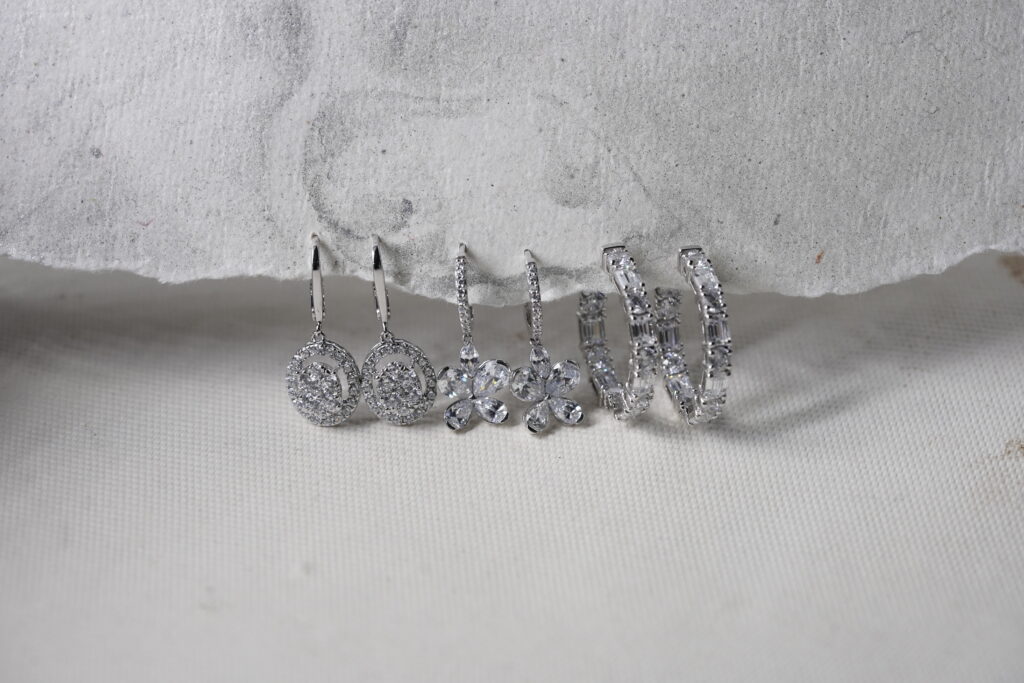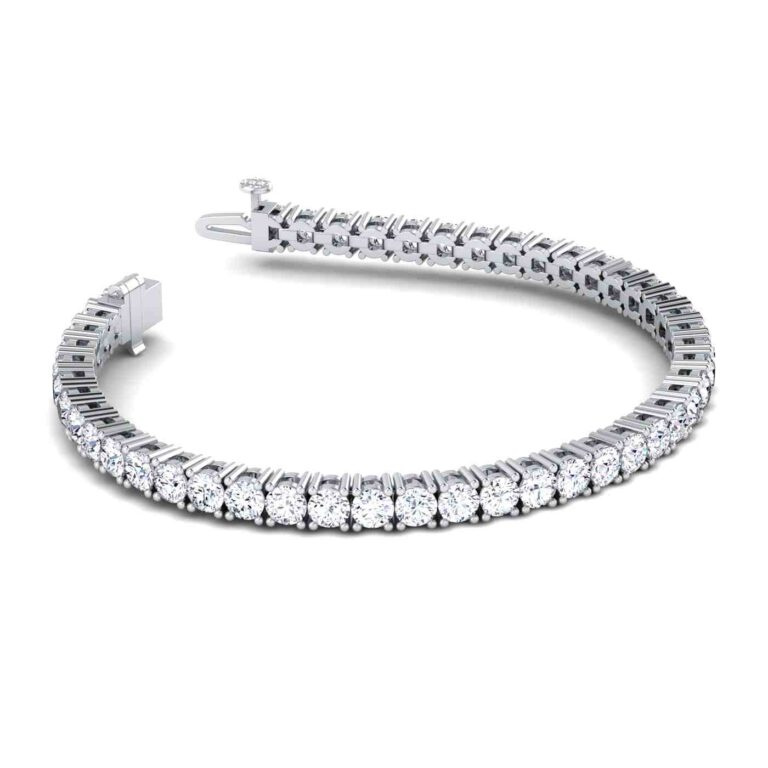JEWELRY RENDERING VS. PHOTOGRAPHY: WHICH IS BETTER FOR YOUR BUSINESS

Introduction
In today’s digital-first marketplace, especially in industries like jewelry where aesthetics are everything, visuals are no longer just a nice-to-have they’re essential. Jewelry brands, whether they’re traditional brick-and-mortar stores transitioning online or digital-native startups, all face the same challenge: how to present their pieces in the most compelling and visually stunning way possible. In this context, the debate between jewelry rendering and jewelry photography is more relevant than ever.
Both rendering and photography aim to do the same thing showcase a piece of jewelry in the best possible light. However, they go about it in completely different ways. While photography captures real-life images of finished jewelry pieces, rendering uses advanced computer-generated imagery (CGI) to create hyper-realistic visuals of jewelry, often before it even exists physically.
Suppose you’re a jewelry designer, manufacturer, or retailer trying to figure out which visual approach best suits your business. In that case, this blog will help you break down the key differences, benefits, and best-use scenarios of both. Let’s dive into the pros, cons, and practical implications of jewelry rendering versus photography.
The Importance of Visuals in the Jewelry Industry
Jewelry is a luxury product. Customers don’t just buy it they admire it, fall in love with it, and often invest a significant amount of money in it. In the absence of physical touch or in-store experiences, visual representation becomes everything. A poorly lit or low-resolution image can deter a buyer just as fast as a glowing, high-quality image can convert one.
Great visuals do more than just look nice they build trust. Especially in e-commerce, customers are not just shopping; they are relying solely on what they see. A clear, crisp, and beautifully rendered or photographed image can reduce bounce rates, increase conversion rates, and even reduce product returns because it helps set accurate expectations.
Furthermore, with the rise of platforms like Instagram, Pinterest, and TikTok, high-quality visuals have become even more critical. These platforms are not only sources of inspiration but also powerful sales drivers. If your images don’t stop the scroll, you may lose out to competitors with stronger visual appeal.

What is Jewelry Rendering?
Jewelry rendering refers to the use of 3D modeling and rendering software to create digital, photorealistic images of jewelry designs. This process begins with a CAD (Computer-Aided Design) model of the jewelry piece. Once the digital model is complete, materials like gold, platinum, diamonds, and colored gemstones are digitally applied. Lighting, reflections, shadows, and environmental elements are then simulated to produce a lifelike final image.
This form of visualization has gained immense popularity in recent years because of the increasing accuracy and realism of 3D rendering technology. Many jewelry businesses are now opting to showcase rendered images on their websites, catalogs, and marketing materials especially when physical samples are not yet available or are expensive to produce.
One of the most powerful aspects of rendering is flexibility. Imagine designing an engagement ring and wanting to showcase it in yellow gold, white gold, rose gold, and platinum, with five different gemstone options. Traditionally, this would mean producing multiple physical versions and photographing each one. With rendering, you can digitally modify the metal color or gemstone type with just a few clicks and produce all variations within hours.
Moreover, renderings can highlight features in ways that photography often can’t such as cutaways, exploded views of components, or enhanced lighting that reveals small details. This makes it particularly valuable in the design and customization process, where clarity is key for customer decisions.
What is Jewelry Photography?
Jewelry photography, on the other hand, involves capturing physical pieces of jewelry using professional cameras, lighting, and photo-editing tools. It’s the traditional method of presenting jewelry and remains widely used especially in high-end and luxury jewelry markets.
Photographing jewelry is both an art and a science. Jewelry is among the most difficult subjects to photograph due to its reflective surfaces, small size, and intricate detailing. Getting the lighting right to avoid harsh glares or dullness, while still capturing the sparkle and brilliance of gemstones, requires skill and expensive equipment.
Once photographed, the images often go through a meticulous editing process to correct color balance, remove dust or fingerprints, and ensure a flawless final result. In some cases, high-end retouching might also enhance the sparkle or adjust reflections to make the piece more appealing.
Jewelry photography offers a sense of authenticity that renderings, no matter how advanced, sometimes struggle to replicate. Customers can see the real-life imperfections and textures of the actual product, which can be reassuring especially when shopping for fine jewelry or luxury pieces where authenticity matters.
Comparing Jewelry Renderings and Photography
When comparing jewelry renderings and photography, it’s important to assess them not in terms of which is better overall, but which is better for your specific business needs. Let’s look at some key differences.
In terms of cost, jewelry rendering is often more budget-friendly, especially when dealing with high volumes of product images. Photography requires physical samples, studio time, photographers, lighting gear, props, and post-production editing all of which can add up quickly. Renderings, on the other hand, are created digitally, so there’s no need to manufacture each design before it’s marketed.
When it comes to flexibility and speed, rendering is again a clear winner. Need to change the metal type? Switch out a gemstone? Adjust the angle or lighting? These changes can be made in minutes with rendering. With photography, even minor changes require reshooting the product, re-editing, and more time.
In terms of realism and authenticity, photography has the upper hand. While modern renderings can be incredibly lifelike, there’s a tactile, emotional quality to real photos that some customers prefer especially in luxury markets. The way light plays on a real diamond, or the subtle imperfections in a handcrafted ring, can sometimes communicate value in ways a rendering can’t.
For product development and pre-launch marketing, renderings shine. Designers can start promoting new collections or offering customizations before the first physical sample is even created. This enables brands to market faster and test customer interest with zero physical inventory.
However, in branding and storytelling, especially on social media, photography may be more effective. Lifestyle shots with models wearing the pieces, emotional settings like proposals or weddings, or behind-the-scenes shots of craftsmanship all require real photography to evoke the right response.
When Should You Choose Jewelry Rendering?
Jewelry rendering is an excellent choice for businesses that prioritize speed, cost-effectiveness, and design versatility. If you’re offering custom-made jewelry, selling online, or launching large collections frequently, rendering can help you scale efficiently.
Startups and small businesses can especially benefit from rendering because it removes the barrier of having to produce physical samples for every design. This allows you to test the market, showcase a broader range of designs, and pivot quickly based on customer feedback.
Rendering is also perfect for jewelry CAD designers, manufacturers, and wholesalers who need to present clean, consistent, and professional visuals to clients or buyers before the actual pieces go into production.
It’s also the ideal solution for companies working with international clients or operating remotely. Instead of shipping physical prototypes back and forth, rendering allows for real-time design approval with crystal-clear visuals.
When Should You Choose Jewelry Photography?
Jewelry photography remains a strong choice for brands that trade heavily on brand image, trust, and luxury appeal. If you operate in the high-end segment or offer unique handcrafted items, photography can convey the quality and authenticity of your products more effectively.
It’s also essential for storytelling and lifestyle branding. For social media campaigns, website banners, influencer marketing, and print advertising, real photos often resonate more emotionally with viewers. A beautifully lit photograph of a bride wearing your diamond earrings on her wedding day will always evoke more feeling than a rendered image.
Physical retail stores may also benefit more from photography, as they often need real photos for displays, brochures, and point-of-sale materials. In such contexts, showcasing the physical reality of your pieces reinforces credibility and trust.
Finally, photography is indispensable when showcasing one-of-a-kind or vintage pieces, where the uniqueness of the actual item is a major selling point.
The Hybrid Approach: Why You Might Need Both
Increasingly, smart jewelry brands are adopting a hybrid strategy using both renderings and photography to their advantage. This approach offers flexibility and cost savings while still maintaining the emotional connection that real photography can offer.
For example, a brand might use jewelry renderings on its e-commerce product pages to offer customizable views, various metal and stone options, and quick image generation. At the same time, the same brand might use real photography for its marketing campaigns, social media posts, or promotional materials to build authenticity and brand identity.
The two mediums are not mutually exclusive. In fact, when used strategically, they can complement each other beautifully. Renderings can fill in gaps when product photos are not yet available, and photography can elevate the emotional appeal of your branding.
Final Thoughts: Choosing the Right Visual Strategy for Your Jewelry Business
There is no one-size-fits-all answer to the jewelry rendering vs. photography debate. The right choice depends entirely on your business model, your brand positioning, and your budget.
If you’re a fast-moving e-commerce business, a CAD designer, or a custom jewelry maker looking for speed, efficiency, and visual versatility, then jewelry rendering is likely the best solution for you.
If you’re a luxury brand focused on authenticity, emotional branding, and lifestyle marketing, then professional photography may offer the realism and trust your customers seek.
But in most cases, the best strategy might be a smart blend of both using rendering for speed and scalability, and photography for branding and emotional engagement.
Elevate Your Jewelry Brand with The Cad Maker
At The Cad Maker, we understand the power of visuals in jewelry marketing. That’s why we specialize in creating stunning, photo-realistic jewelry renderings that help you sell your designs before they’re even produced. Whether you’re launching a new collection, offering custom designs, or building your e-commerce store, we provide high-quality renderings with fast 24-48 hour delivery and seamless change management.
We don’t just create images we bring your vision to life. From realistic metals and gemstones to perfect lighting and presentation, our team ensures every detail looks just as it would in real life or better.
Ready to see your jewelry designs in their best light? Contact The Cad Maker today and discover how professional jewelry rendering can take your brand to the next level.
